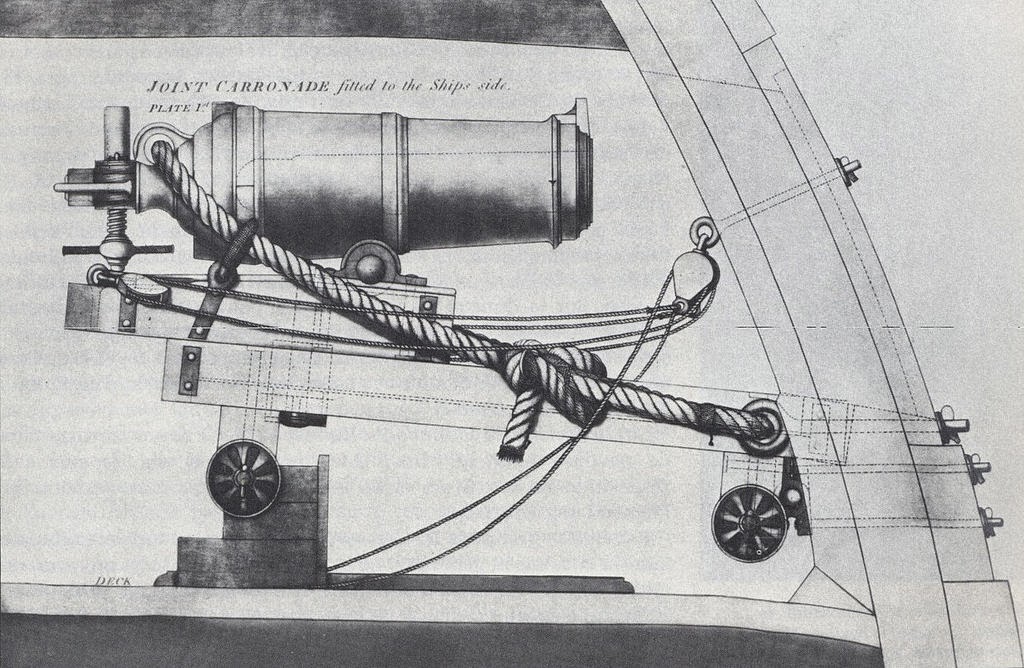"In sea battles from the 1780s to the end of the Napoleonic Wars a decisive factor was often the use of the carronade. Few of these guns were carried on any one ship, and they were not counted in a ship's rated number of guns so that, in practice, the actual number of weapons carried might be significantly higher than the rating by which a ship was classed, such as a "74" or a "50".
The word "carronade" was an early, perhaps earliest, example of a trade-name becoming the accepted term for an entire class of products, in this case a short smoothbore cast iron cannon. It took its name from the original manufacturer, the Carron Company, which had an ironworks in Falkirk, in Scotland. The short barrel indicated that it was a short-range weapon, powerful against ships but even more so against personnel in close actions. A carronade weighed a quarter as much and used a quarter to a third of the gunpowder-charge for a long gun firing the same size of roundshot. The lower recoil forces meant that slider mountings, rather trucks, could be employed. The light weight of the carronade made it especially attractive for mounting at higher levels – and important factor when an enemy's deck should be cleared by grapeshot before boarding. They could also provide a very powerful punch for a small vessel such as a gunboat or sloop. Though the basic concept remained unchanged, carronades were manufactured for a huge range, from 6 to 42-pounders, and 68-pounder weapons not unknown.
When introduced into the Royal Navy for trial in 1779, many captains had reported most unfavourably upon it, owing to its short range and tendency to overheat when fired rapidly. The comment on short range was justified for, devastating as a carronade could be in action, its weakness was its short range. The analogy may be a sub-machine gun which, if used at close quarters, can be murderous, but is useless against an enemy armed with a sniper rifle who prefers to stay out of its range and count on his accuracy. Only by luring the sniper closer can the man armed with the sub-machine gun make use of its ability to unleash a devastating volume of fire. In the case of sailing warships encountering each other at sea the presence of carronades might not be immediately obvious and in many cases were to provide a very unpleasant surprise as the ships closed. The first occasion on which carronades were used in action, when the Royal Navy's 36-gun frigate Flora encountered the French 36-gun frigate Nymphe, was a good example…"

Full article here
link
Amicalement
Armand

